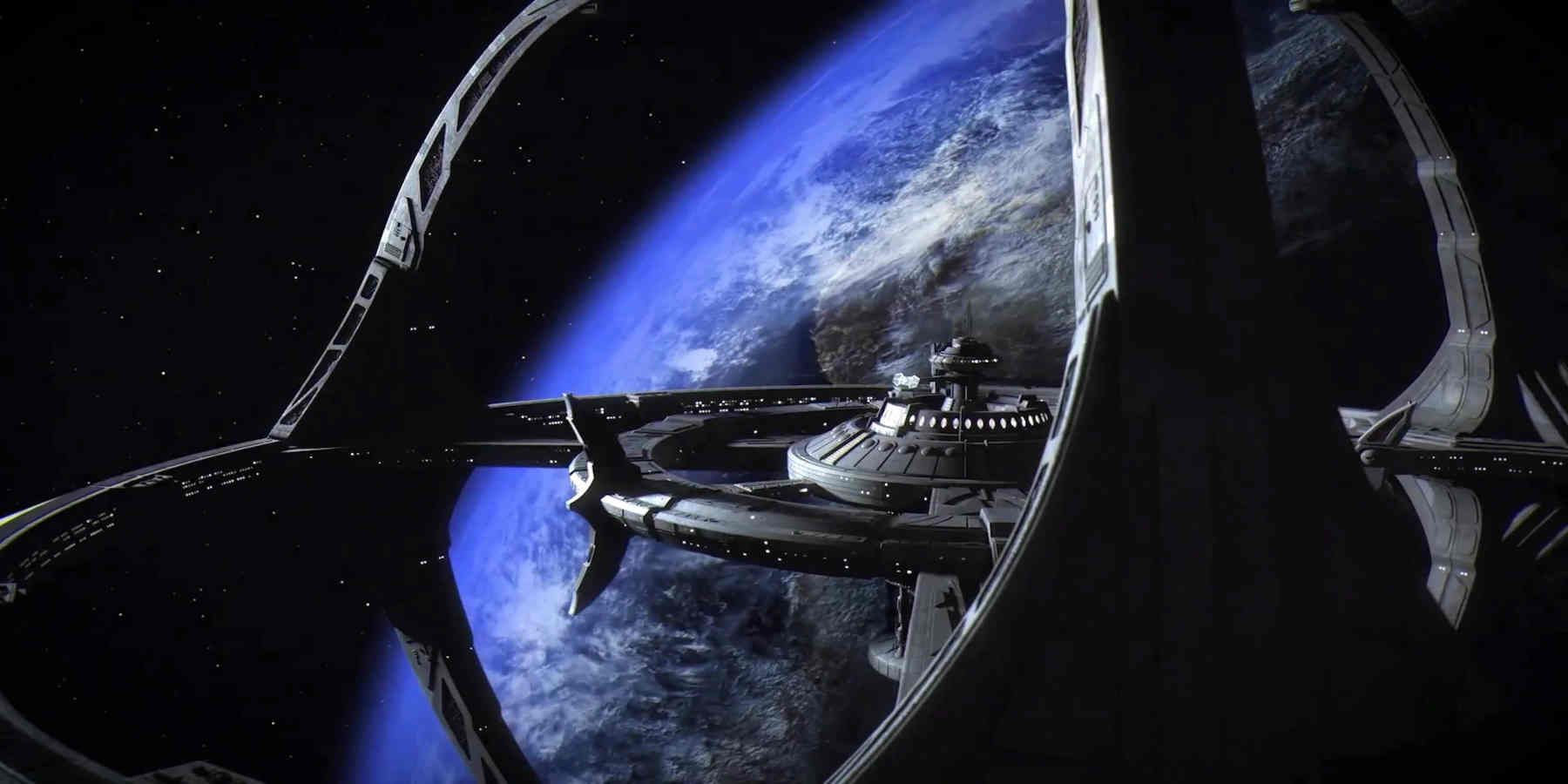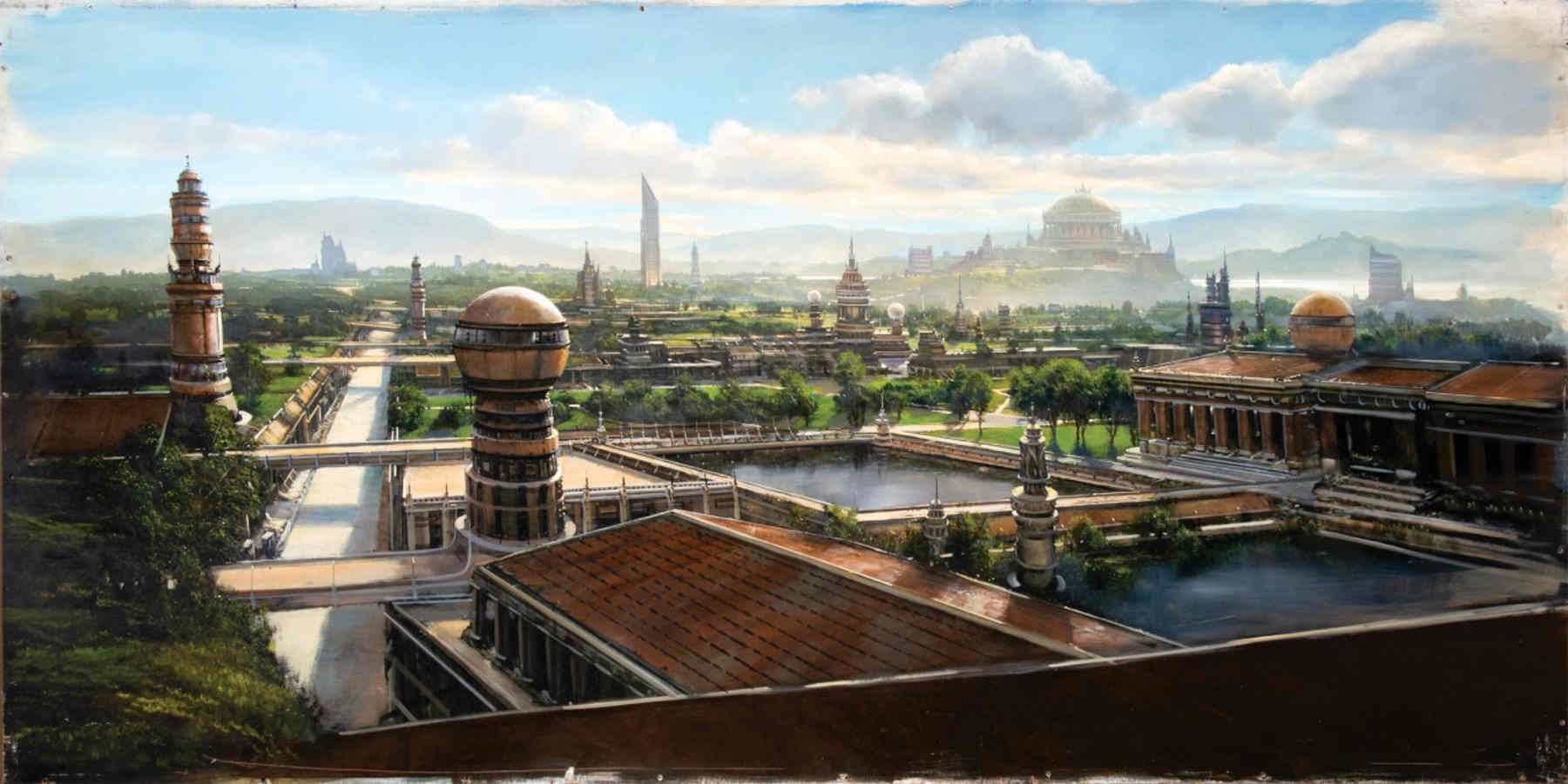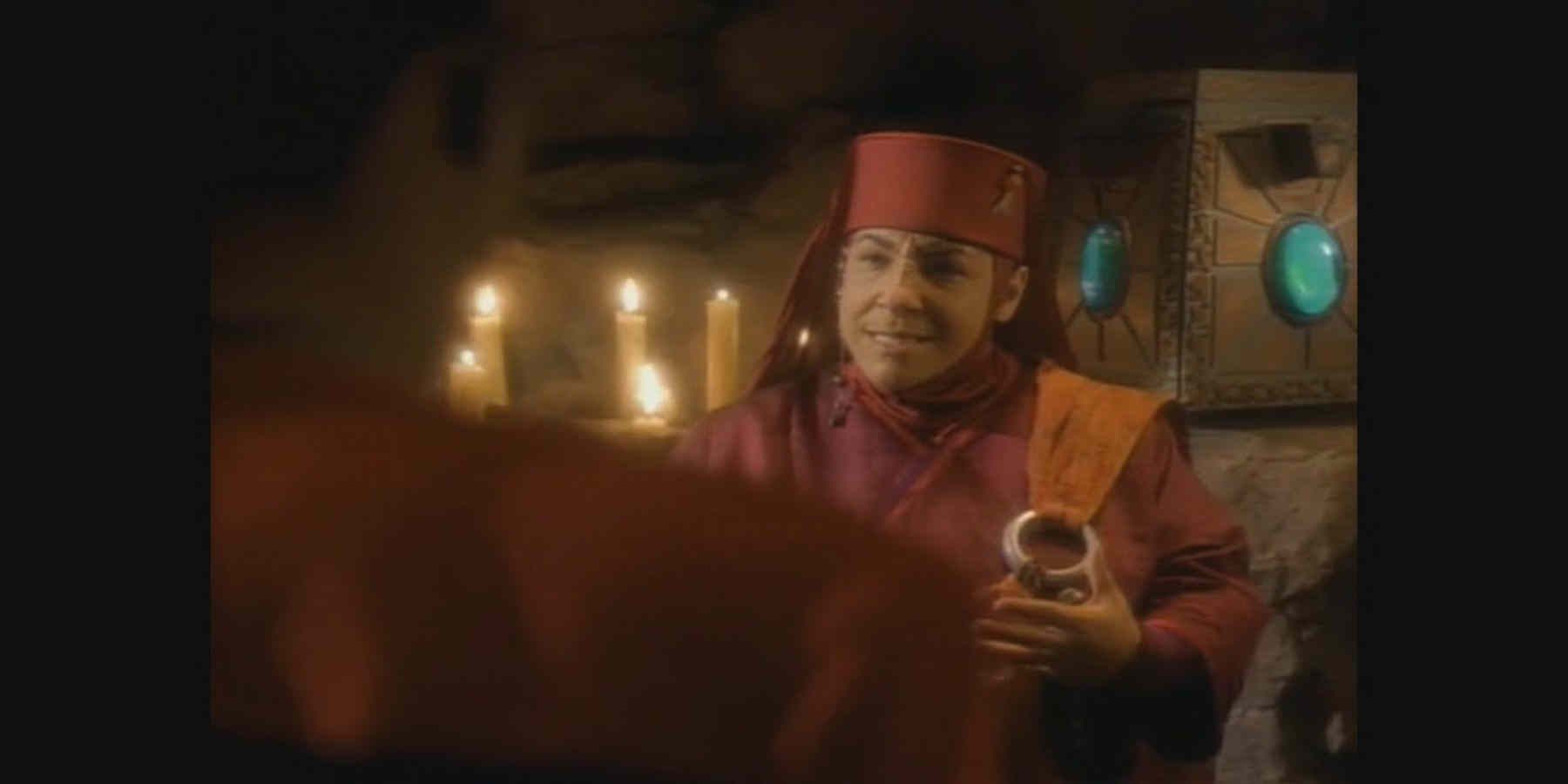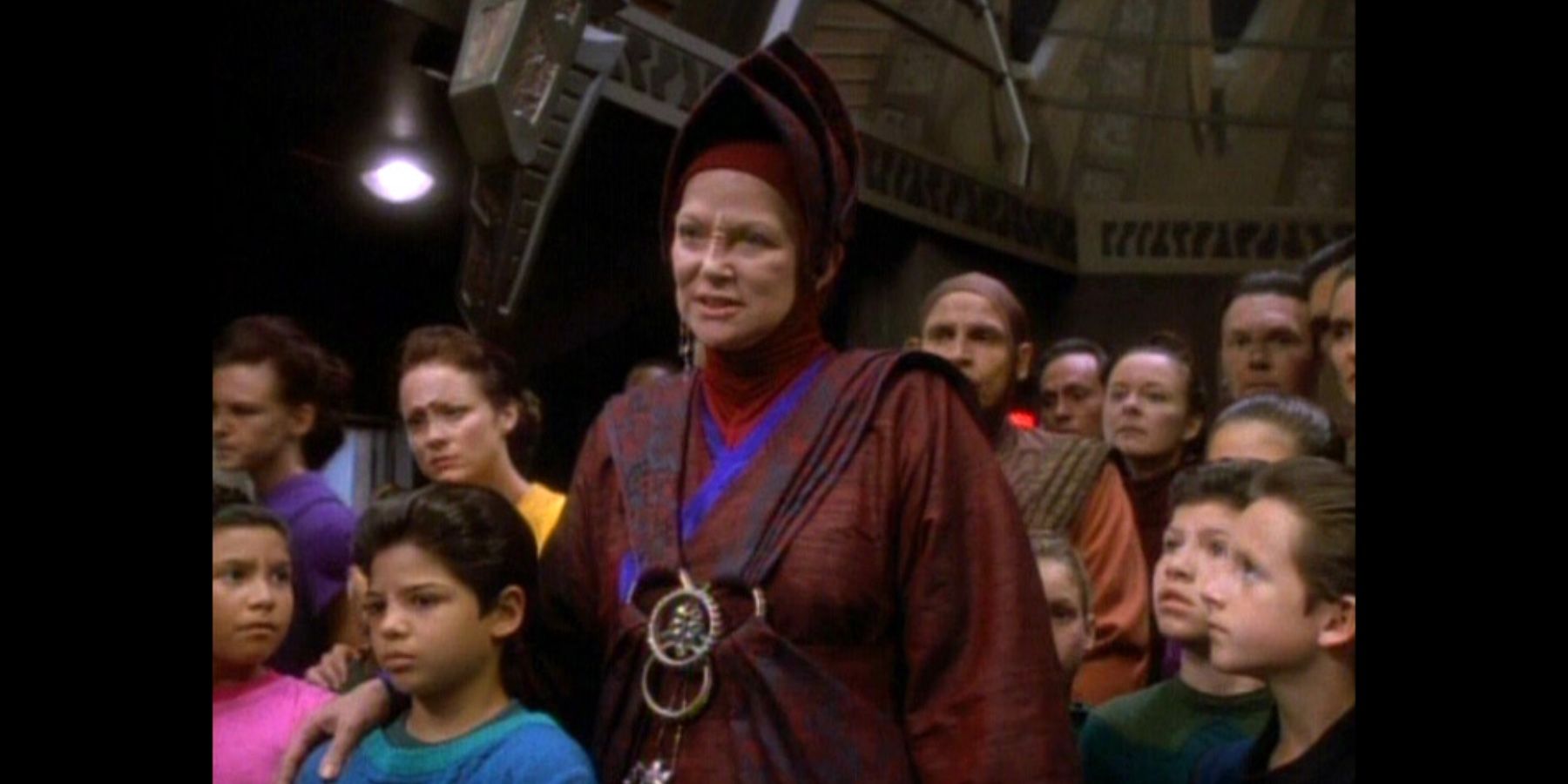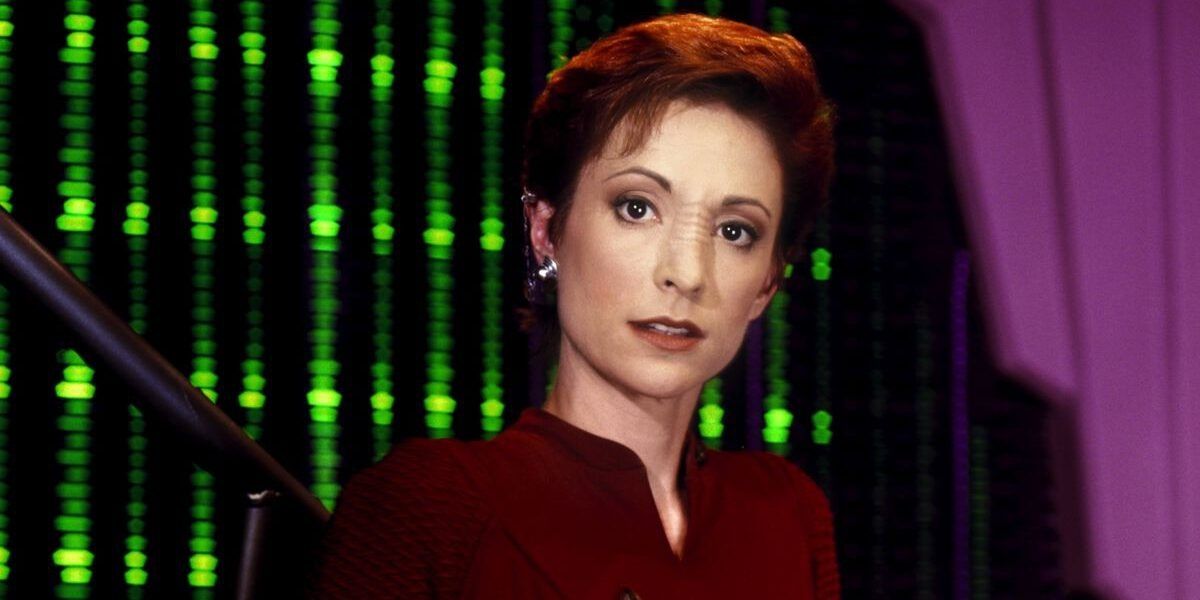Bajorans spent a long time cultivating their peaceful presence in the galaxy. What put Bajor on the map of Star Trek planets to watch out for, and what’s pushed them forward in their new-found freedom? Located in the Bajoran system, the M-class planet is the gravitational center of at least five known moons, including Jeraddo and Derna. It’s also the largest in the Alpha Quadrant, with a population of around 3.8 million Bajorans. Fans get a sense of how beautiful the landscape is whenever they’re treated to slow-panning camera shots of its capitals and places of worship.
Unfortunately, Bajor is also known for how it suffered under the greedy hands of Cardassians. The militaristic species sought to strip Bajor of its natural resources, and used Bajoran slave labor to increase the wealth of Cardassia while lining their personal pockets in the process. Still, Bajor has been through a lot and come out the other side swinging with tenacity that even the United Federation of Planets wasn’t always ready to handle.
Natural Resources of Bajor
Before Bajor made its Star Trek debut, the planet had already established itself as forward-thinking and forward-moving. Bajorans were the builders, creators, and thinkers of the Alpha Quadrant, and their contribution to galactic knowledge was incalculable. These feats of arts and sciences, accomplished in places like the University of Bajor, were only the beginning of what Bajorans had to offer. They really hit their stride when their civilization came into contact with non-corporeal beings they would later come to worship as the Prophets.
Among its many minerals, such as ore, the natural resources of Bajor made it possible for Bajorans to build a solar-sail spacecraft and venture into space for the first time. During this nearly-impossible journey, they encountered a wormhole and identified it as the Celestial Temple, home of the Prophets. Commander Sisko and his son Jake (Cirroc Lofton) recreated this legendary path in season 3 of Star Trek: Deep Space Nine, and were pleasantly surprised at the effectiveness of the vintage Bajoran ship. Bajor also achieved warp speed, which literally put them on Cardassia’s radar.
As Bajorans themselves were some of the planet’s best resources, they eventually established colonies on neighboring Alpha Quadrant planets like Golana, Dreon VII, and Bajor VIII. The greenery of Bajor, however, was still its most valuable resource. No wonder Keiko O’Brien (Rosalind Chao) quickly gave in to being pressured by her husband and prolific Chief Engineer Miles (Colm Meaney) and decided to serve as Chief Botanist on an agrobiology expedition on Bajor. Who would pass up an opportunity to study the Star Trek equivalent of Eden?
Bajoran Religion
Religious practices have been the backbone of Bajoran culture for thousands of years, even influencing many of Bajor’s architectural choices. In Deep Space Nine, Major Kira Nerys (Nana Visitor) tells Commander Sisko that it’s “the only thing holding her people together.” In doing so, she emphasizes how important it is to honor Bajoran spiritual practices. It helps the viewers understand a bit about Bajoran culture. They look to the Prophets to guide and support them. They respect the Emissary above all else because they have a direct line of communication with the Prophets, a title Commander Sisko found himself reluctantly holding after a visit with Kai Opaka (Camille Saviola) in season 1, episode 1, “The Emissary.”
Vedeks are so respected that Bajorans trust them with establishing the new ‘Kai’ even though their political process is a little iffy at times. Ro Laren (Michelle Forbes) was the closest Star Trek had to an atheist Bajoran, and even she still followed customs such as adorning one of her ears with jewelry.
The only other aspect of Bajoran culture with such profound influence was its caste system known as The D'jarras. Bajorans were categorized by their function in society and then received treatment based on where they fit. Those labeled as Ih'valla, for example, were seen as superior to the Te'nari for their artistic abilities. All that changed when Cardassia showed up with its own nefarious sense of superiority, ready to exploit both Bajor and its inhabitants.
Post-Occupation Bajor
Much has been said about the Cardassian Occupation of Bajor, the end of which kicked off a brand new Star Trek series. It was brutal, invasive, and long-lasting. Bajoran religion was a source of strength, so Cardassian officers would target spiritual leaders like then-Vedek Kai Winn Adami (Louise Fletcher) with harsh punishments for spreading the word of the Prophets.
Contrary to popular belief, the occupation didn’t happen overnight. The Cardassians ingratiated themselves bit by bit into Bajor’s culture, and Bajorans didn’t realize what they were really up to until it was too late. Therefore, pushing them out of Bajor’s government wasn’t as simple as showing them the metaphorical door and chasing them through it.
Bajoran resistance factions like the Kohn-Ma and the Maquis used all manner of guerilla warfare to eventually drive Cardassians out of Bajor. In the wake of achieving this feat, though, they split up, and their in-fighting started causing major issues as Bajor tried to pull itself together. Vedek Winn resorted to underhanded power grabs to take the title of Kai in season 1, episode 20, “In the Hands of the Prophets.” The Bajoran Occupational Government, established by Cardassian officers, turned into the Provisional Government but maintained its reputation as being useless. It’s safe to say that Bajorans were in political shambles and struggling through their collective trauma. More than anything, Bajor was fighting to redefine and rediscover itself outside what it suffered under the occupation.
Major Kira once told Gul Dukat (Marc Alaimo) that Bajor:
“...accomplished [its freedom] in spite of the Cardassians, not because of them.”
Let the Gul tell it, though, and Bajor was a tiny helpless planet that needed harsh Cardassian guidance to push it to great heights. This ignorant perspective denies the years Bajor spent developing itself before it first appeared in Star Trek. It was on its way to becoming a great galactic influence before being subjugated for over forty years.
Bajorans were thriving, participating in galactic trade, and seeking enlightenment through religious practices. Their science-forward traditions meshed well with their worshiping of the Prophets because both value faith, charity, and humility. The occupation made Bajorans both unwilling and unable to be as giving as they’d previously been. In fact, it changed a lot of things about Bajoran culture. Bajor survived a lot, probably more than most other planets in the Star Trek universe. Yet, the stubborn tenacity of Bajorans to beat the odds or at least come at them fist-first is why Bajor always pulls through – no matter what.

